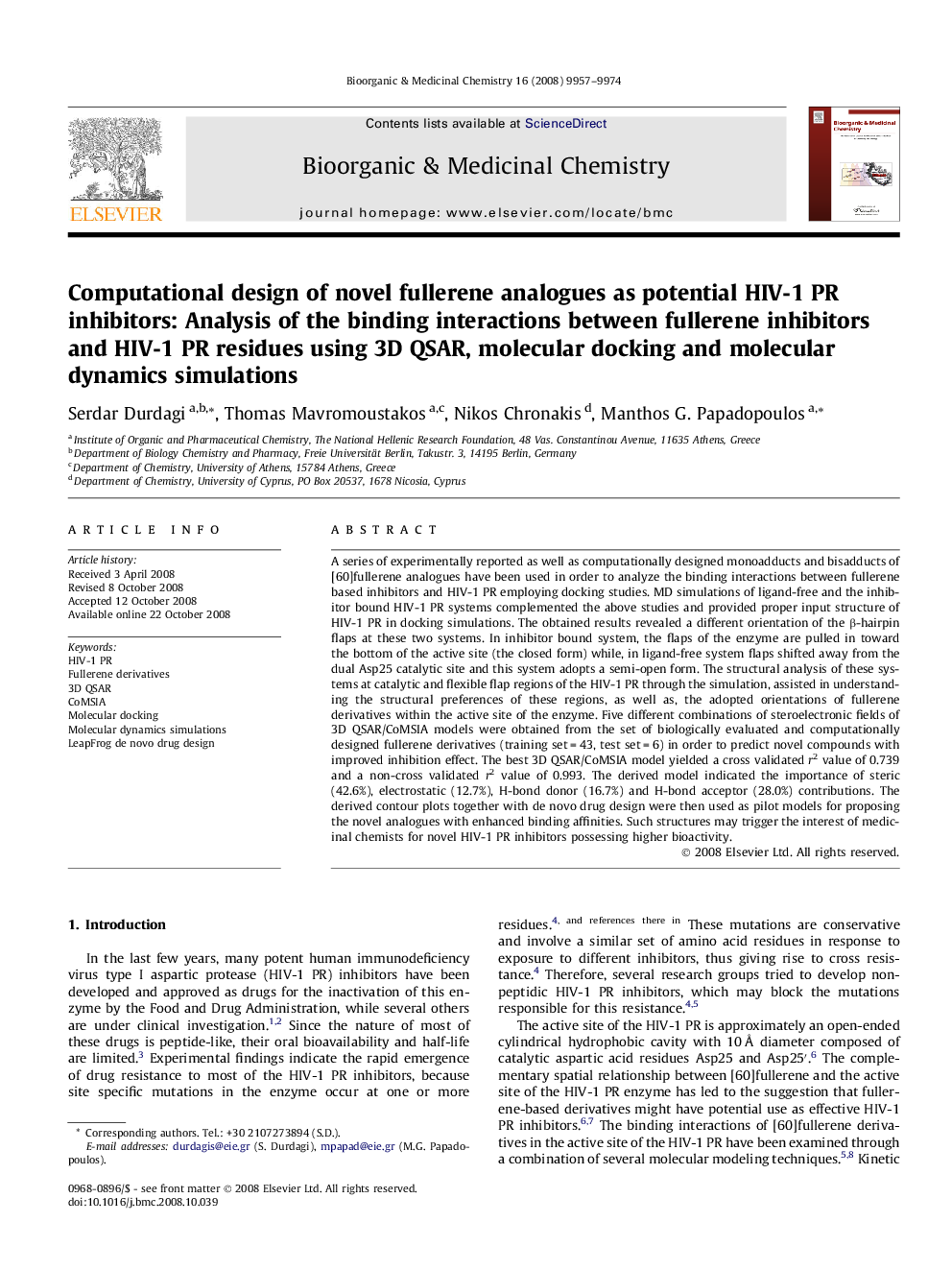| کد مقاله | کد نشریه | سال انتشار | مقاله انگلیسی | نسخه تمام متن |
|---|---|---|---|---|
| 1360950 | 981453 | 2008 | 18 صفحه PDF | دانلود رایگان |

A series of experimentally reported as well as computationally designed monoadducts and bisadducts of [60]fullerene analogues have been used in order to analyze the binding interactions between fullerene based inhibitors and HIV-1 PR employing docking studies. MD simulations of ligand-free and the inhibitor bound HIV-1 PR systems complemented the above studies and provided proper input structure of HIV-1 PR in docking simulations. The obtained results revealed a different orientation of the β-hairpin flaps at these two systems. In inhibitor bound system, the flaps of the enzyme are pulled in toward the bottom of the active site (the closed form) while, in ligand-free system flaps shifted away from the dual Asp25 catalytic site and this system adopts a semi-open form. The structural analysis of these systems at catalytic and flexible flap regions of the HIV-1 PR through the simulation, assisted in understanding the structural preferences of these regions, as well as, the adopted orientations of fullerene derivatives within the active site of the enzyme. Five different combinations of steroelectronic fields of 3D QSAR/CoMSIA models were obtained from the set of biologically evaluated and computationally designed fullerene derivatives (training set = 43, test set = 6) in order to predict novel compounds with improved inhibition effect. The best 3D QSAR/CoMSIA model yielded a cross validated r2 value of 0.739 and a non-cross validated r2 value of 0.993. The derived model indicated the importance of steric (42.6%), electrostatic (12.7%), H-bond donor (16.7%) and H-bond acceptor (28.0%) contributions. The derived contour plots together with de novo drug design were then used as pilot models for proposing the novel analogues with enhanced binding affinities. Such structures may trigger the interest of medicinal chemists for novel HIV-1 PR inhibitors possessing higher bioactivity.
A series of experimentally reported as well as computationally designed [60]fullerene analogues have been used in order to analyze the binding interactions between fullerene based inhibitors and HIV-1 PR with employing combined docking, MD simulations and 3D QSAR studies.Figure optionsDownload as PowerPoint slide
Journal: Bioorganic & Medicinal Chemistry - Volume 16, Issue 23, 1 December 2008, Pages 9957–9974